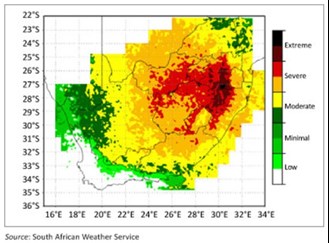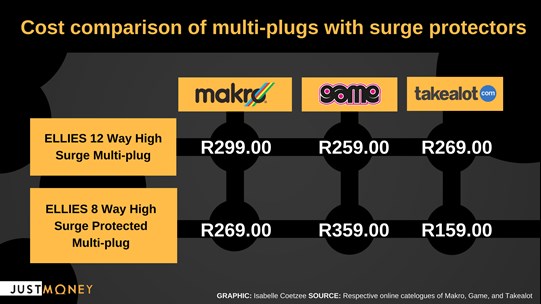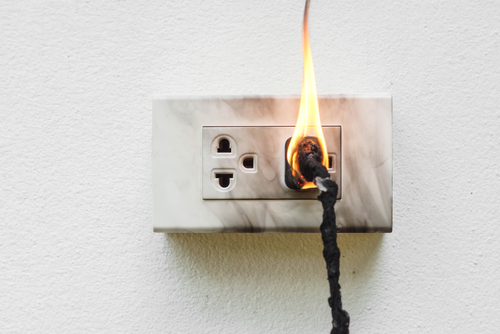South African households are vulnerable to sporadic power surges, predominantly because of lightning strikes and power cuts.
Similar to the build-up of water pressure in an exploding pipe, a sudden change in voltage can have a negative impact on household appliances, such as a television or a fridge.
According to Lukas Snyman, research and innovation professor at Unisa’s department of electrical engineering, a power surge targets the copper wires in electronic boards.
“If the electrical currents are too high for the copper tracks, they will overheat and melt away, permanently preventing electrical power from entering the device,” said Snyman.
The cause of power surges
Snyman pointed out that lightning is the most common source of South African power surges – particularly during summer in the Highveld.
Besides this, power surges also happen after periods of load shedding by the country’s public electricity provider, Eskom.
The power cuts themselves are not damaging. However, putting the power back on leads to a power surge which may damage appliances.
The level of risk in South Africa
After briefly flirting with nationwide load shedding following a strike in early June, Eskom confirmed it has not implemented load shedding since Youth Day (16 June).
“Eskom is aware of reports on localised power outages in some municipalities, which have been attributed to network failures, overloading, and cable theft,” said an Eskom spokesperson.
“The risk of load shedding always exists, but Eskom manages this risk by putting in place mitigating strategies to ensure continuity of power supply,” the spokesperson explained.
South Africa is also well-known for its exposure to lightning storms – particularly in the central to northern interior of the country.
According to a research article by scientist Morné Gijben, which is based on lightning data supplied by the South African Weather Service, almost the entire country is at severe risk from lightning.
According to the article the concentration of lightning, as well as the lightning risk, decrease only towards the west of the country.
Based on Gijben’s research, the below map shows which areas in South Africa were most at risk of lightning strikes between 2006 and 2010:


Which appliances are most exposed?
According to Snyman, telephone lines are most at risk of lightning strikes, and their resultant power surges.
“The old telephone poles are particularly vulnerable because they are above ground and lightning can easily hit them and course huge surges in voltage and current,” said Snyman.
Besides this, the consequences of power cuts can also damage computers, televisions, and all other ICT equipment.
Any appliance with electric motors, such as fridges and deep freezes, are also vulnerable.
“These devices contain copper coils, which cause a whiplash effect, which can again damage local electronic boards,” he explained.
Not all insurers will cover damages
According to Lynette Van Locherenberg, head of 1st for Women Insurance, not all insurance companies cover damages from power surges.
She advised consumers to check their insurance policy to see if they are covered for such cases.
If they realise their appliances have been damaged as a result of a power surge, they must immediately contact their insurer, she said.
Taking matters into your own hands
Snyman explained that surge protectors, for both telephone outlets and power plugs, can prevent damages from power surges.
“These can be bought from electrical equipment suppliers all over in South Africa. It’s best to buy separate ones for the telephone system and the power plug system. Protectors can also be installed by a qualified technician on a distribution board,” said Snyman.

He explained that these protectors bounce current between two small metal bars, instead of allowing it to reach and damage household appliances.
“The more of these someone puts in their house on a particular supply line, the more protection they will have in terms of taking a particular power strike,” said Snyman.
“If the surge is very high, it completely burns away the metal bars. But at least they protected you once,” he pointed out.
“When a protector has burnt, they normally cause a small local explosion, and the protector itself can be blown to pieces. So, people should check their protectors regularly for any signs of damage,” he said.
Snyman personally uses protectors in his home, both on his distribution board and at the outlets of all delicate appliances.
“So far, I have survived most ‘attacks’,” he said.
“If someone does not have protectors, and they hear the rumbling coming, they can quickly run to the supply ports and temporarily disconnect them,” he advised.

